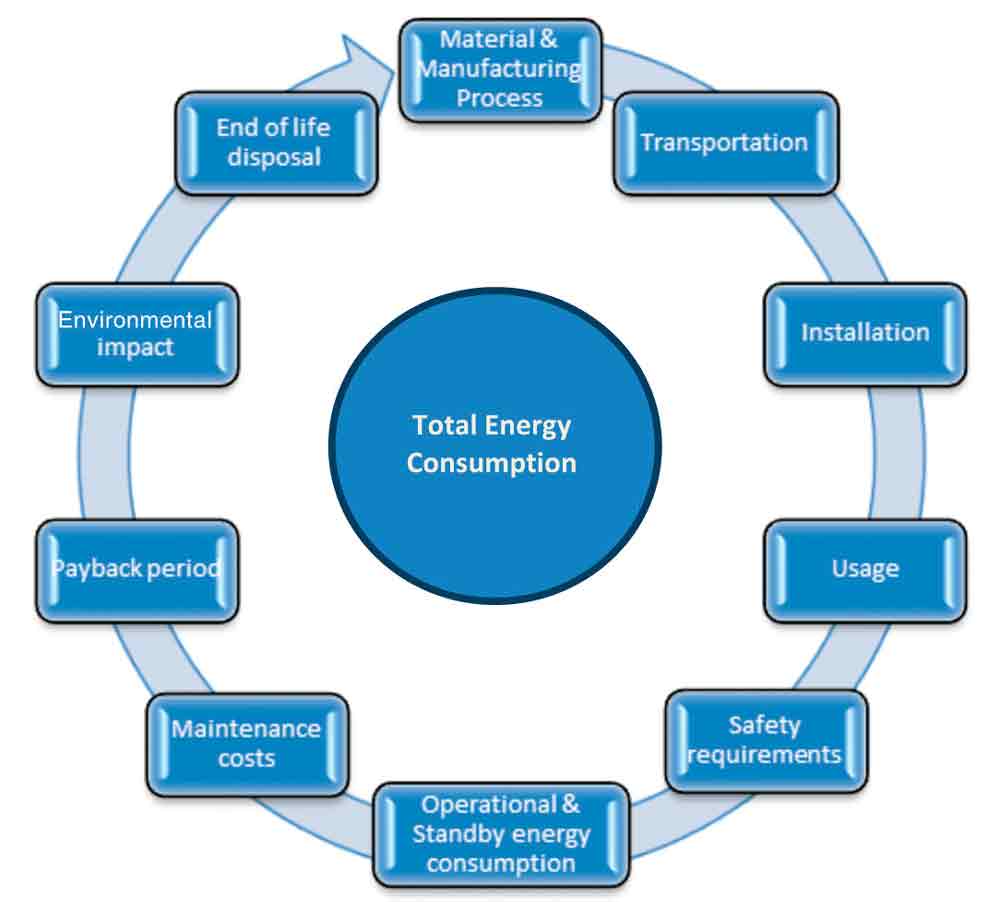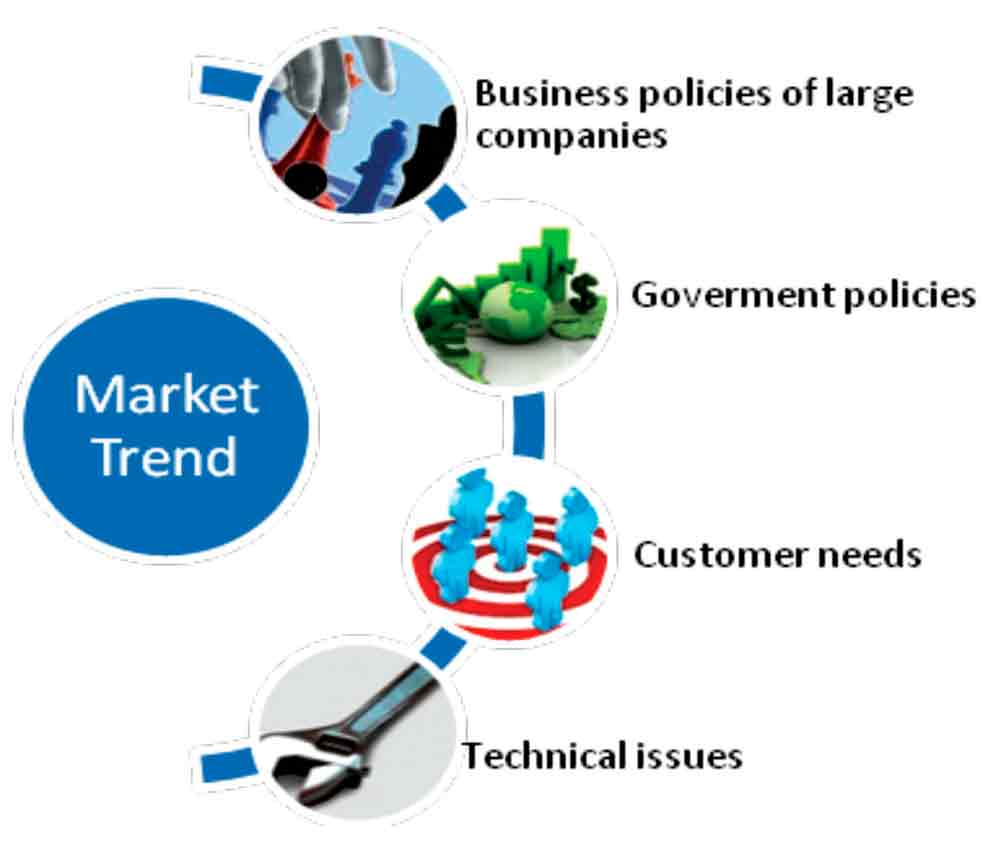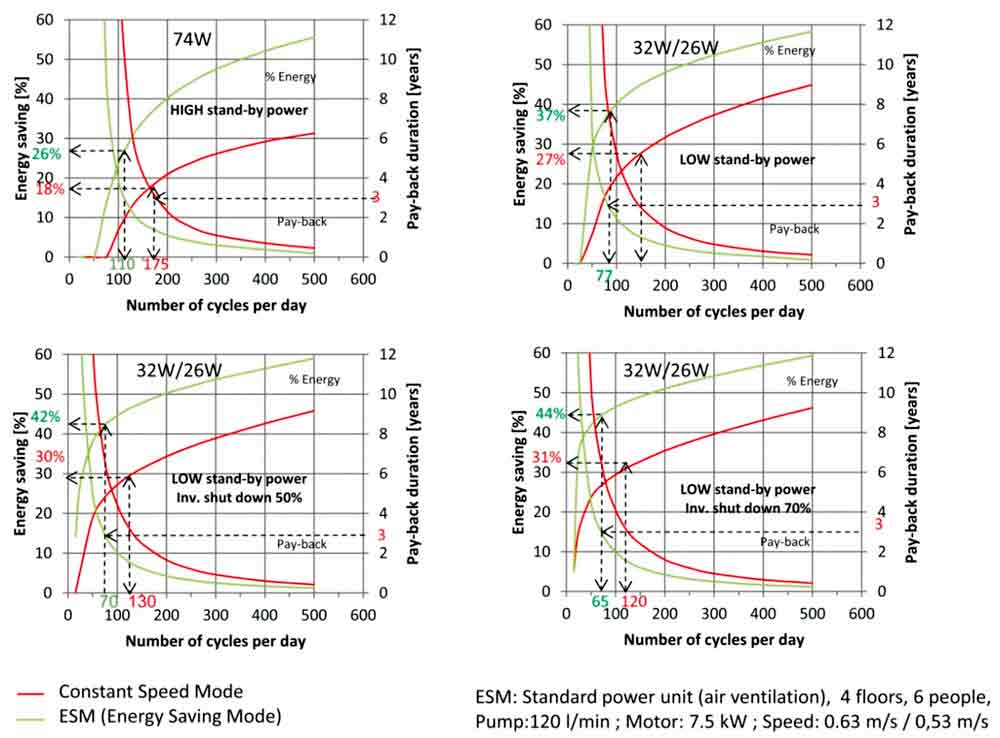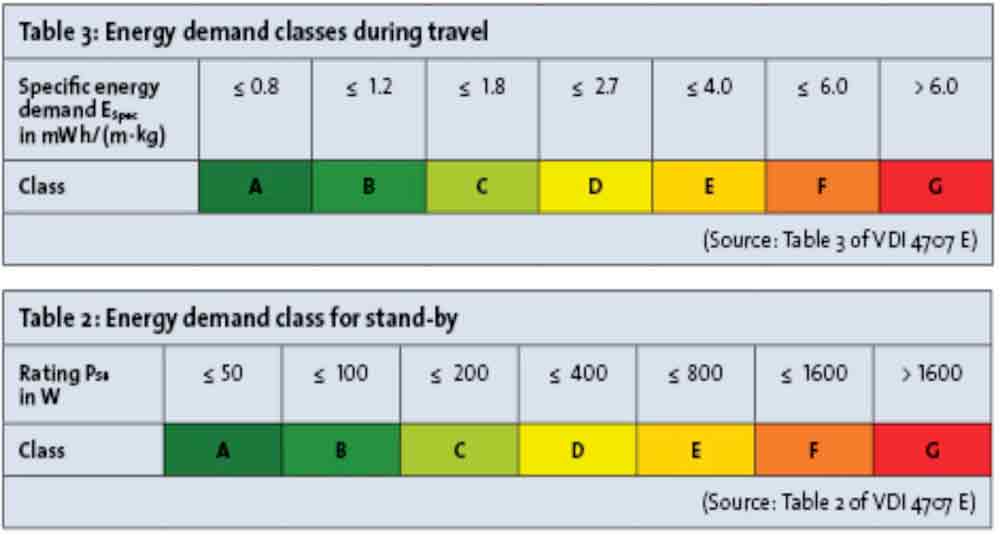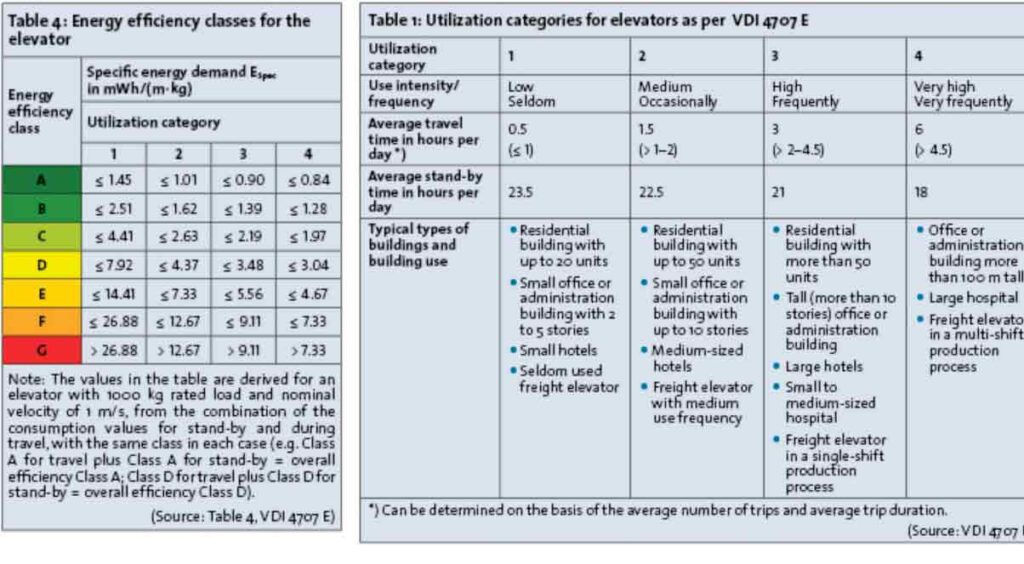Energy-Efficient VVVF Hydraulic Lift Drive
Jun 1, 2013
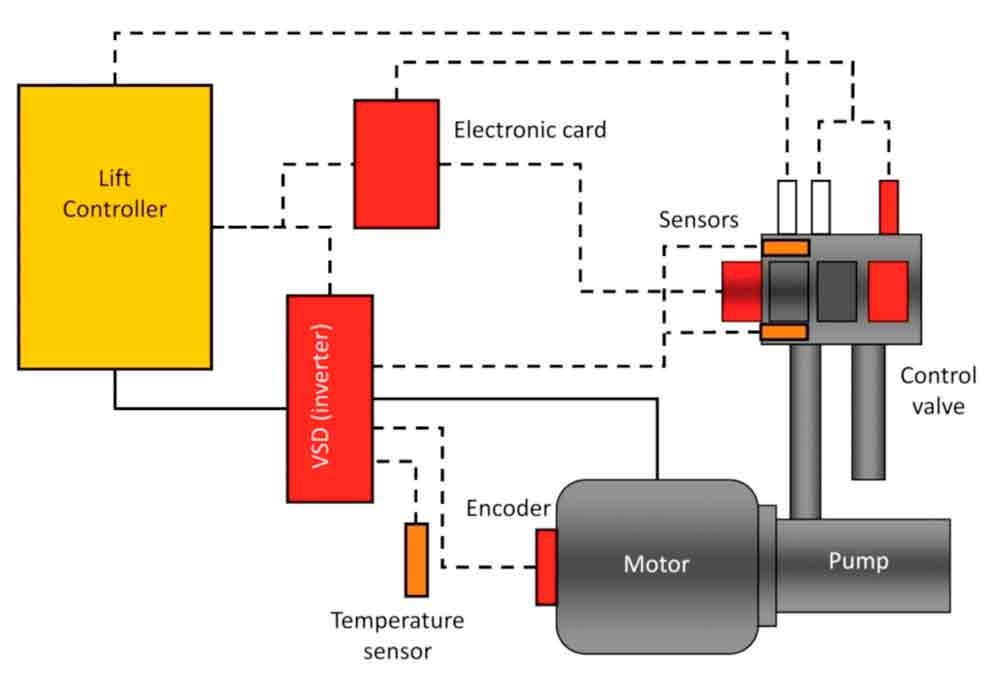
Both developed and developing countries are facing major challenges to reduce carbon emissions and environmental impact. While new energy-efficient products are hitting the market every day, energy-efficiency norms and guidelines established by governments work as catalysts in filtering out outdated and inefficient products. The elevator industry is no different, having seen energy-efficient and environmentally friendly designs in the past few years. Variable-voltage, variable-frequency (VVVF) technology has been present in both traction and hydraulic elevators for quite a while and has gradually become popular. However, several questions are still debatable. This article examines some energy-efficiency facts, market trends and the hydraulic-elevator market in Europe and India to find how a simple, inexpensive VVVF hydraulic-elevator drive could shape the future of hydraulic elevators.
Energy efficiency is now among the most important parameters designers, manufacturers and consumers look at while selecting a product. Product marketing emphasizes the environmental footprint and eco-friendly aspects to make advertisements more appealing. However, behind the sophisticated product-marketing campaigns and green labels, some basic questions that interest the end user still remain partially unanswered.
When Is an Elevator Energy Efficient?
The answer to this question has been debated for quite a time. Some opinions of its answer are as follows:
- If the payback period of the elevator is three to five years.
- If the elevator consumes less than 3-5% of the total energy consumption of the building.
- If the elevator has low operational and standby energy consumption.
While energy consumption and money are usually the only parameters in focus, we should not forget there are other important parameters that are often discarded. To ascertain if an elevator is energy efficient, a complete lifecycle analysis (LCA) of the system needs to be performed using proper tools and statistical information. An LCA takes into consideration the complete lifespan of the product (Figure 1). Would an elevator system be energy efficient if it needed less power to operate but its manufacturing process were an environmental disaster, taking an extraordinary amount of resources to transport and install? Furthermore, what if its safety level is compromised, and it has high maintenance costs and environmental impact? The energy invested in all these factors – not just low operation and standby costs – must be accounted.
How Are Energy-Efficient Elevators Classified?
Approximately 300,000-350,000 elevators are installed each year, out of which 80,000-100,000 are hydraulic. The world lift stock is approximated at around nine million installations, out of which 3.5-3.8 million are hydraulic. While architects and engineers are concentrating on making modern elevators more energy efficient, the number of old installations should not be ignored. Cutting power consumption by 25% would approximately result in 4-5 TWh of power per year, the equivalent of what 3,500 wind turbines could generate in that time.
New energy-efficiency norms for the elevator industry, such as ISO 25745 Part 1 and VDI 4707, are being aggressively adopted in developed countries to make elevator systems energy efficient. These are applicable to new and existing installations. For example, the VDI 4707 energy efficiency norm places an elevator into a particular class. A system would be awarded an energy class depending on the power consumption it has during travel and standby. Furthermore, energy efficiency is also based on the type of elevator system. This kind of certification is broadly based on power and standby consumption and does not consider the complete LCA of the system.
General Market Trend
In the elevator industry, four principal parameters broadly define market trends: business policies of large companies, government policies (in the form of norms and regulations), customer needs and technical issues. A classic example in the elevator industry is the increasing use of VVVF technology, as it is being marketed as energy efficient and environmentally friendly, while offering smoother starts, and starting and stopping accuracy. This technology is being widely supported by government institutes in developed countries in the form of new energy-efficient norms, certifications and energy-efficiency classification. However, it is important to once again underline the fact that not every VVVF solution available in the market can be taken as an energy-efficient product, as lower operating and standby energy consumption numbers could be misguiding, especially when the product comes with such drawbacks as high maintenance costs, complicated design and exclusive service contracts that often only benefit the manufacturer. It is very important to look at the complete picture before coming to a conclusion, rather than just concentrating on a part of it.
Indian Hydraulic Lift Market
The advantages hydraulic elevators offer in the low-rise lift market are well known. This can be seen in the E4 report published in March 2010. According to it, from a total lift stock of 4.8 million lifts in Europe, 1.18 million (25%) are hydraulic. This means that from an annual installation of 110,000-120,000 lifts, 25,000-30,000 are hydraulic installations. The U.K. lift market also projects a similar picture, with around 21% of installations being hydraulic. In the U.K. alone, an estimated 30,000 hydraulic lifts would have to be modernized to meet the energy-efficiency norms in the next five to 10 years.
India, on the other hand, is a developing market when it comes to hydraulic installation. Not long ago, hydraulic elevators were considered a problem due to some myths in the elevator industry. Industrial hydraulic components were used to make hydraulic-elevator power packs; wrong design and the absence of specific technical knowhow were mainly responsible for the problems and failures. However, with the availability of the right components and technical knowhow, the hydraulic-elevator industry has seen increases in the number of installations over the last eight years. Its growth rate is now more than 60% per annum.
The total (including passenger and non-passenger) hydraulic-lift installation is nearly 8% of the total number of lifts installed annually. India is projected to have an estimated 20,000-25,000 new hydraulic installations in the next five years. This is a conservative estimate, only accounting for metropolitan and tier 1 and 2 cities. More than 20,000 car-parking systems are to be needed in tier 1 and 2 cities to ease parking congestion in the next few years. As hydraulic elevators create further inroads into this market, the idea of using energy-efficient products is no longer optional; rather, it is on the list of “must-have” features.
Is a VVVF Hydraulic Solution Better Than a Conventional Hydraulic Solution?
The answer to this question should be logical, as well as analytical. In order to decide which hydraulic solution (mechanical control, electronic servo control or VVVF control) is best suited for a particular application, the following should be considered:
1) A mechanical hydraulic control system offers a simple, reliable and cost-effective solution. However, it is not very suitable when temperature and load variations are high. As variations in oil temperature change oil viscosity, mechanical valve adjustments may fail to give the required travel quality when temperature and load variations are extreme. Secondly, most mechanical valves are normal solenoid valves, which are typically on/off. In the absence of a closed-loop system with real-time feedback, the valves deliver a pre-adjusted flow without knowing the real need of the system. Mechanical valves are good options for low-usage lifts (less than 150 travels a day), where temperature and load variations are not extreme and a simple, reliable and cost-effective solution is of prime importance.
2) An electronic servo control solution offers, by virtue of closed-loop electronic control, a distinct advantage over a mechanical valve solution. It has proportional solenoids controlled by an electronic card that reacts to the real-time signals from the flow, temperature and, sometimes, pressure sensors. Thus, the system can dynamically vary the performance to suit the requirement, compensating for wide temperature and pressure variations. An electronic valve solution is a good option for both moderate-, as well as high-usage lifts (more than 160 travels a day), where temperature and load variations are high, and travel comfort, starting and stopping accuracy are of primary concern (e.g., hospitals, shopping complexes, commercial buildings).
3) VVVF control can be seen as a hybrid solution, combining the advantages of mechanical and electronic valves. Available as closed or open loop, the system not only compensates for changes in temperature and pressure, but also makes the control valve nearly adjustment free. It is an energy-efficient solution that can also be applied effectively especially where high starting current (required by the motor) is not available. The power drawn by the inverter in the starting phase is much lower than a conventional installation, and total energy savings of more than 30% can be achieved versus non-VVVF installations. This solution is best for locations where the number of cycles per day is higher than 160; changes in oil temperature and load are high; high starting current is not available; riding comfort, starting and stopping accuracy are important, independent of temperature and load changes; and/or operational and standby energy savings are of primary concern.
What Is an Ideal Hydraulic VVVF Solution?
Figure 4 shows the six important criteria that should be kept in mind while selecting a VVVF solution. Parameters such as simplicity, safety, cost effectiveness, reliability and low service costs should be weighted equally with energy efficiency (low operating and standby power consumption). One should also not forget that servicing and maintenance costs in elevators far outrun the investment and energy savings throughout the full system lifespan. In order to correctly tag a system as energy efficient, an LCA should be the primary indicator.
Available VVVF Hydraulic Solutions
There are many types of VVVF hydraulic solutions available in the market, from simple to complicated, and cost effective to expensive. They are broadly classified into open or closed loop, depending on the technique used to control the drive.
Figure 5 shows a closed-loop inverter solution. In it, the electronic card and inverter are updated with real-time data from encoder (attached on the motor), flow, pressure and temperature sensors. The controller then takes corrective action, depending on the variation it registers against predefined parameters. Such a system is not only complicated, but also expensive and difficult to maintain. Secondly, a closed-loop system can trigger vibrations at lower frequencies as it tries to constantly correct the travel. Renovating an existing system means not only changing the complete control valve and drive, but also the motor and, sometimes, pump, which often make the work complicated and expensive. In terms of energy efficiency and initial investment, application of such systems can only be justified for high-usage lifts (more than 700 cycles/day).
An open-loop inverter control like the one for the Blain EV4[1] offers practical advantages, as the system remains simple, user friendly, cost effective and easily maintainable. As seen in Figure 6, the control valve does not interface with the inverter nor an electronic card, and is simply connected to the lift controller. The inverter is connected to the lift controller, temperature sensor and motor, and it does not need an expensive pressure and flow sensor. With the help of the embedded software, it can calculate the load, read the current temperature from the temperature sensor and process oil and pump performance data to obtain motor speeds (reference frequencies) in Hertz for the full, leveling, inspection and secondary full speeds. Additionally, temperature-control gain and leakage reference frequencies for empty and loaded car pressures are calculated. As a result, less energy is consumed during up travel, which increases the efficiency of the system and also reduces oil heating. Using the inverter also reduces motor starting current and the size of the electric energy meter. The inverter is programmed to run either in constant-speed mode (where the output is maintained independent of the load and temperature variations) or energy-saving mode (where the inverter reduces the full speed with an increase in load), thus consuming less power, but keeping the acceleration and deceleration angles during travel in a comfortable zone. It can take corrective action by capturing the motor torque at fixed intervals and recalculating the correct output by comparing it with the preprogrammed parameters.
The installation of such a system is easy, as the control valve is simplified by having no controls in the up direction. Giving the oil type and elevator data a teaching run with an empty car is sufficient for the inverter to self learn and configure itself fully automatically during the initial installation. Secondly, such a design makes it possible to renovate an existing installation by just swapping a few components in the control valve and adding an inverter, making it a VVVF drive. The solution is intentionally designed to be backward compatible, making it cost effective for renovation work. The down control is intentionally kept mechanical, as hydraulic elevators descend due to gravity, and inverter control is not required for 80% of the installation.
In some inverter solutions, the energy generated by the system (conversion of potential energy into kinetic energy in down travel) is burned into a resistor, which prevents hydraulic oil from getting heated. Some have a regenerative system, which tends to convert the potential energy stored in the oil into electrical energy, which is then fed into the grid. Such solutions look appealing in marketing brochures and theory; however, their cost of implementing (with some payback times of more than 30 years), complexity and practical use, and the difficulty of ensuring available infrastructure for them outrun their advantages.
Energy Savings
Lift consultants and architects are often confronted with important questions concerning payback time and energy savings by end users. While the number of cycles the elevator makes in a day is an important deciding factor in energy savings, it is equally important to know the following:
Figure 7 shows the energy savings with respect to number of cycles per day and payback duration. In it, a clear comparison can be made between different situations, like high inverter standby power consumption to number of cycles per day, and estimated payback periods. As shown, when an inverter with a standby energy consumption of 26 W runs in energy-saving mode, 44% energy savings are achieved, with a payback period of three years.
Conclusion
Energy performance of lifts is only one of many parameters for green lift evaluation; a complete LCA is the proper method for ascertaining if the elevator is energy efficient. New-generation VVVF hydraulic systems should not only have the advantageous characteristics of conventional hydraulic elevators, but also be in a position to compensate load and oil-temperature variations, and have minimum standby power consumption. System software should offer different operating modes like constant-speed mode, energy-saving mode, etc. so users can select an appropriate method of operation to suit individual needs.
References
[1] Dr. K. Ferhat Celik. Elevcon 2012. “A Load & Temperature Compensation Method for Green Hydraulic Lifts by Means of Inverters.”
[2] Dr. K. Ferhat Celik. 2nd Symposium on Lift & Escalator Technologies, September 2012. “Economically Effi-cient Green Hydraulic Lifts.”
Get more of Elevator World. Sign up for our free e-newsletter.
